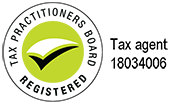This strategy is best presented as an example however there are some background facts about income streams (pensions) which are important to remember:
- Once an income stream commences, no further contributions can be made unless that income stream is stopped.
- Furthermore, on the date that the income stream has been commenced, the proportion of taxable and tax free balances is locked in and will not change for the life of that income stream.
- When you begin to draw down on your income stream, this money coming out of the fund is made up of taxable and tax free components according to the locked in proportions. (e.g. if the Fund has 70% taxable balance, each payment will be made of 70% taxable money).
Worked example:
Terry is 58 and is currently drawing an income stream from her self managed superannuation fund. Terry’s income stream has a taxable percentage of 40%. In the 2014 financial year, Terry makes a non concessional contribution of $150,000. This non concessional contribution (i.e. post tax contribution) will increase Terry’s tax free balance in the fund, however, this money is not automatically added to the Terry’s income stream as contributions cannot be added once the income stream has commenced.
There are several options available to Terry:
Keep the $150,000 in accumulation mode
: this would mean that some of the income of Terry’s Fund will be taxable as it is no longer a 100% pension fund. The Fund would also need to apply for an actuarial certificate to determine the percentage of the fund’s income which is taxable. This strategy may be of advantage depending on Terry’s situation however assuming there is no other benefit for Terry to keep an amount in accumulation mode this is tax the Fund will be paying unnecessarily.
Stop the existing income stream, add the $150,000 contribution and commence a new income stream with the new balance
: Terry’s current income stream has a taxable percentage of 40% whereas the $150,000 is 100% tax free money. If the income stream is stopped and the new money added, the new pension which is commenced will have a lower the taxable percentage. This essentially ‘muddies the water;’ as the taxable and tax free components of the pension are diluted. When this new pension commences, the taxable and tax free percentages are re-calculated at date of commencement. All withdrawals from the new pension will be made up of the new taxable to tax free ratio.
Keep the existing income stream and commence a second income stream with the $150,000
: Terry’s current income stream remains as is. The second income stream commenced with the $150,000 will have a 0% taxable percentage. This situation can now be used to Terry’s advantage. Each year Terry must withdraw the minimum pension amount from each of her pensions. Let’s say Terry’s minimum for the 2014 financial year is $10,000 however Terry withdraws $30,000. Terry must meet the minimum withdrawal requirement on both of her pension accounts however Terry has withdrawn $20,000 in excess of the minimum. Terry can now cherry pick which account the excess pension is allocated against:
- Because Terry is under 60 years old, her pension withdrawals are taxable in her own name. Terry could choose to allocate the extra $20,000 against her second income stream as this stream has a NIL taxable percentage. Under this scenario, Terry would only pay tax on the taxable portion withdrawn from her first income stream.
- Alternatively, if Terry has minimal taxable income in her own name, she could choose to allocate the extra $20,000 against the her first income stream in order to lower the balance and therefore reduce the tax payable by any adult beneficiaries when she passes away.
Our strategy to run multiple pension streams allows for the most flexibility in terms of pension withdrawal and estate planning. In addition, with the proposed changes to the Centrelink deeming rules in January 2015, pensions commenced prior to 31 December 2014 will be grandfathered under the old deeming rules. If an existing income stream were to be stopped, new money added and then re-commenced this would count as a new pension and therefore be subject to the new deeming rules.
If you have any questions in regards to our pension strategies or would like further to discuss your superannuation options further, please do not hesitate to contact our office on 07 4688 2500.
|







